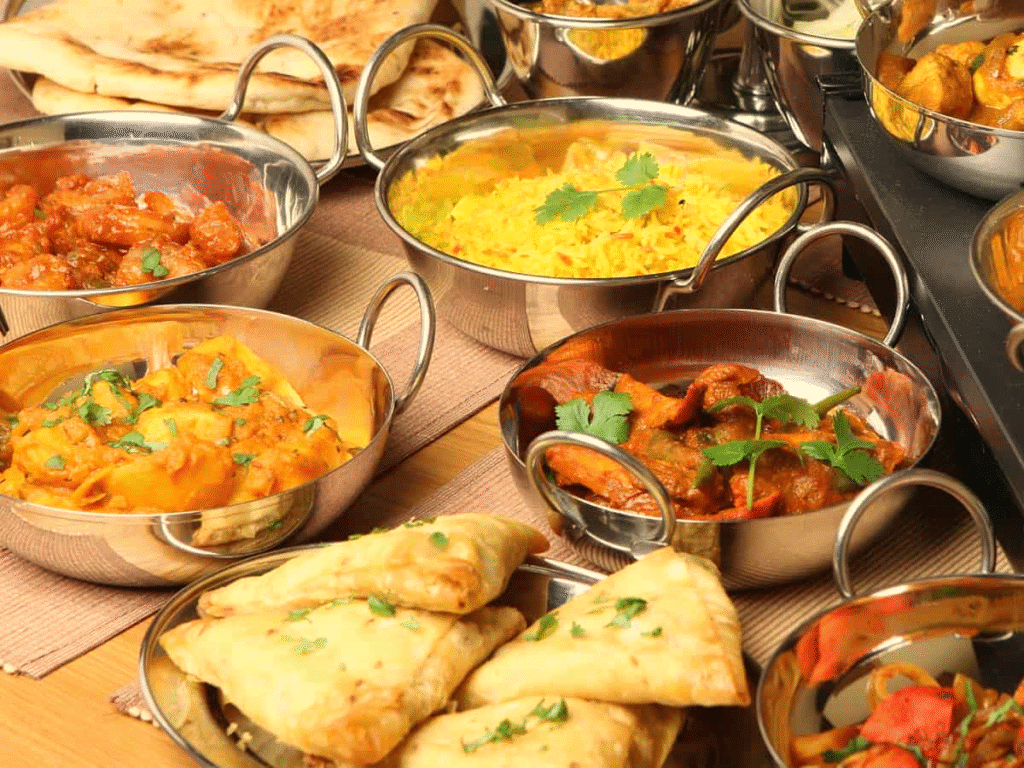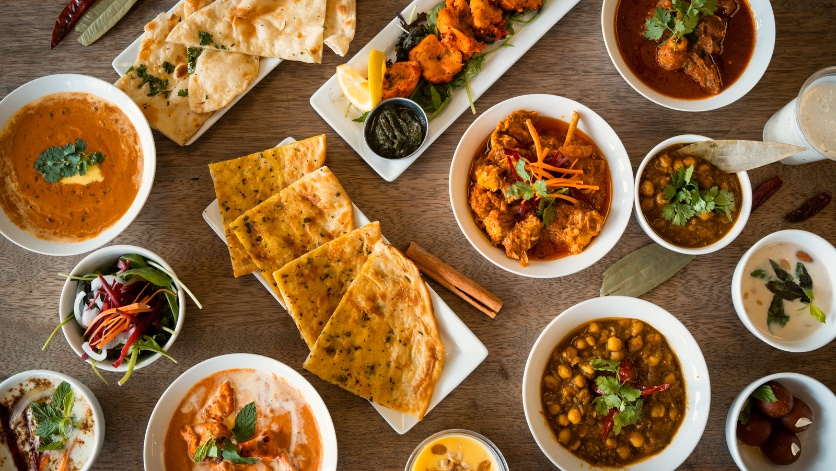12 Classic Indian Dishes Everyone Should Learn to Make
Indian cuisine is a treasure trove of flavors, aromas, and traditions. With over 5,000 years of culinary history, India’s food reflects its cultural diversity—ranging from the fiery curries of the south to the aromatic biryanis of the north.
But here’s the best part: you don’t need to travel to Mumbai, Delhi, or Kerala to experience these dishes. With the right guidance, you can bring authentic Indian flavors right into your home kitchen.
This guide explores 12 classic Indian dishes everyone should learn to make, complete with cultural stories, cooking tips, and why they’re beloved around the world.
Why Cook Indian Food at Home?
Story: Sarah, a London-based student, often craved the butter chicken she grew up eating at her grandmother’s house in Delhi. Instead of relying on takeout, she started cooking it herself. Over time, she not only saved money but also reconnected with her family traditions.
Cooking Indian food at home:
Lets you control ingredients (spice levels, health-conscious swaps).
Brings cultural appreciation into your kitchen.
Allows you to connect with tradition while experimenting with flavors.

12 Classic Indian Dishes Everyone Should Master
1. Butter Chicken (Murgh Makhani)
Origin: Delhi
Creamy, mildly spiced, and universally loved.
Invented in the 1950s at Moti Mahal Restaurant in Delhi, butter chicken combines roasted chicken with a tomato-cream gravy.
Case Study: Butter chicken is now one of the most-ordered Indian dishes globally, from Canada to Dubai.
Tip: Marinate chicken overnight in yogurt and spices for maximum flavor.
2. Biryani
Origin: Mughal Influence (Hyderabad & Lucknow famous variations)
A fragrant rice dish layered with marinated meat, saffron, and fried onions.
Story: During the Mughal era, biryani was considered a royal dish, symbolizing luxury. Today, every Indian state has its own version.
Tip: Use basmati rice and cook on dum (slow steam) for authentic taste.
3. Masoor Dal (Red Lentil Curry)
Origin: Pan-India Staple
A hearty lentil stew, packed with protein and comfort.
Case Study: According to a 2020 survey by The Economic Times, dal is cooked in over 90% of Indian households daily—making it the backbone of Indian cuisine.
Tip: Temper with mustard seeds, garlic, and curry leaves for depth.
4. Palak Paneer (Spinach & Cottage Cheese Curry)
Origin: North India
A creamy blend of spinach and paneer cubes, rich in iron and protein.
Story: Indian mothers often encourage children to eat palak paneer by calling it “green power curry,” linking it to strength and health.
Tip: Blanch spinach before blending to preserve its vibrant green color.

5. Chole (Chickpea Curry)
Origin: Punjab
Spicy, tangy chickpeas cooked in a tomato-based gravy, often eaten with bhature (fried bread).
Case Study: Street vendors in Delhi sell thousands of plates of chole bhature daily—it’s a working-class meal turned national favorite.
Tip: Soak chickpeas overnight for creamier texture.
6. Rogan Josh
Origin: Kashmir
A slow-cooked lamb curry flavored with Kashmiri chili and aromatic spices.
Story: Brought to India by the Mughals, rogan josh is often served during Kashmiri feasts called wazwan.
Tip: Don’t confuse heat with spice—Kashmiri chili adds color without overpowering.
7. Dosa with Sambar
Origin: South India
A crispy fermented rice crepe paired with lentil-based vegetable stew.
Case Study: According to The Hindu, dosa is one of the most popular Indian exports, now widely available in New York, London, and Singapore.
Tip: Ferment the batter overnight for the best crispiness and flavor.
8. Aloo Gobi (Potato & Cauliflower Curry)
Origin: North India
A dry curry made with potatoes, cauliflower, turmeric, and spices.
Story: Often called “comfort food of the Indian kitchen,” aloo gobi is loved for its simplicity and balance.
Tip: Add a squeeze of lemon juice at the end to brighten flavors.
9. Samosas
Origin: Persian Influence, Popularized in India
Fried pastry pockets stuffed with spiced potatoes and peas.
Case Study: In 2021, Uber Eats reported samosas as one of the top five most-ordered snacks worldwide.
Tip: Bake instead of frying for a healthier version.
10. Tandoori Chicken
Origin: Punjab
Chicken marinated in yogurt and spices, roasted in a clay oven (tandoor).
Story: At Indian weddings, tandoori chicken is often the star appetizer, symbolizing festivity.
Tip: If you don’t have a tandoor, grill or oven-roast for a similar smoky effect.
11. Gulab Jamun
Origin: North India, Mughal Era
Fried milk-solid balls soaked in rose-flavored syrup.
Case Study: Gulab jamun sales spike every Diwali, with sweet shops selling millions of pieces across India in just a week.
Tip: Fry on low heat so the inside cooks evenly.
12. Jalebi
Origin: Persian Influence, Now a Festival Staple
Deep-fried batter spirals soaked in sugar syrup.
Story: Jalebi is a must during festivals like Holi and Eid. Families often gather around street vendors to enjoy hot jalebis fresh from the pan.
Tip: Use a piping bag or squeeze bottle for even spirals.
Tips for Cooking Indian Food at Home
Stock Up on Spices – Must-haves include turmeric, cumin, coriander, garam masala, and cardamom.
Master Tempering (Tadka) – Adding spices to hot oil or ghee releases aroma and depth.
Balance Heat & Flavor – Indian food isn’t always “spicy”—adjust chili levels without losing taste.
Cook in Stages – Most dishes start with onions, ginger, and garlic. Build flavors step by step.
Pair Right – Dal with rice, curries with naan, snacks with chutneys—it’s all about harmony.
Real-Life Example: Cooking as Cultural Connection
Priya, an Indian immigrant in Toronto, started teaching her kids traditional recipes every Sunday. What began as a way to keep them connected to their roots grew into a small YouTube channel. Today, she has over 100,000 subscribers—proof that Indian cooking at home resonates globally.
Conclusion
Learning to cook 12 classic Indian dishes isn’t just about mastering recipes—it’s about experiencing a culture that values community, flavor, and tradition.
From creamy butter chicken to crispy dosa, from festive gulab jamun to everyday dal, these dishes represent the soul of India. By cooking them at home, you’re not just feeding your stomach—you’re feeding your curiosity and celebrating one of the world’s richest food traditions.
So roll up your sleeves, stock your spice rack, and bring India into your kitchen.
References
The Hindu – Global Popularity of Dosa
Smithsonian Magazine – History of Butter Chicken
Economic Times – Dal in Indian Households
BBC Good Food – Guide to Indian Curries
National Geographic – India’s Culinary Diversity
Food52 – Regional Indian Cooking Explained
Indian Express – Biryani Traditions Across India
Uber Eats 2021 Report – Most Ordered Global Snacks
Harvard T.H. Chan School – Health Benefits of Lentils
Times of India – Gulab Jamun & Diwali Sales
